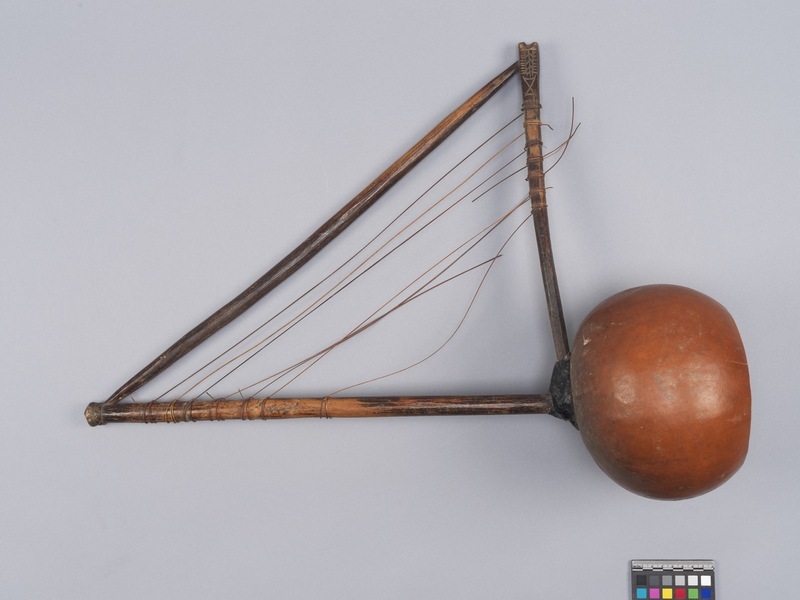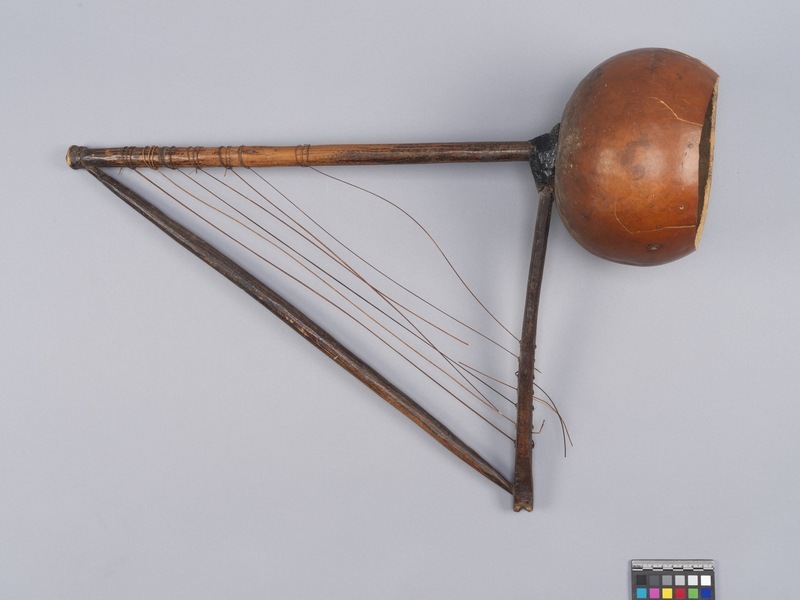Stringed Musical Instrument Item Number: 3522/94 from the MOA: University of British Columbia


Description
Seven-stringed harp-like instrument with a gourd resonator. Triangular wood frame extends from top of gourd; attached to gourd with grass ties and resin(?). One rod is vertical and the other horizontal; connected at their ends with a third diagonal rod. End of horizontal rod has a moulded channel and incised decoration across the front; designs include "X" shapes and linear motifs. Tip of vertical rod is pointed and is circled with a raised band; diagonal lines carved along length. Seven strings, made of grass, are tied around the vertical rod and strung through holes in the horizontal rod. Diagonal rod is undecorated. Coils of grass inside of gourd.
History Of Use
Forked obah. The sound board in this case is half of a dried gourd which the player places against his body to vary the tonal effects. The strings are plucked with the fingers. The obah is used as a solo or as an accompanying instrument. It is important for entertainment and is integral to many rituals and ceremonies, especially those connected with birth, initiation, marriage, and death. A player is trained young, in order to perform well.
Narrative
The donor taught in a rural school in Tobli, eastern Liberia, from 1965 to 1967.
Item History
- Made in Liberia
- Collected between 1965 and 1968
- Owned by Donald White before August 27, 2021
- Received from Donald White (Donor) on August 27, 2021
What
- Name
- Stringed Musical Instrument
- Identification Number
- 3522/94
- Type of Item
- musical instrument
- Material
- gourd fruit, wood, grass fibre and resin ?
- Overall
- height 64.5 cm, width 42.3 cm, depth 19.5 cm
Who
- Culture
- Krahn
- Previous Owner
- Donald White
- Received from
- Donald White (Donor)
Where
- Holding Institution
- MOA: University of British Columbia
- Made in
- Liberia
When
- Collection Date
- between 1965 and 1968
- Ownership Date
- before August 27, 2021
- Acquisition Date
- on August 27, 2021
Other
- Condition
- poor
- Accession Number
- 3522/0094